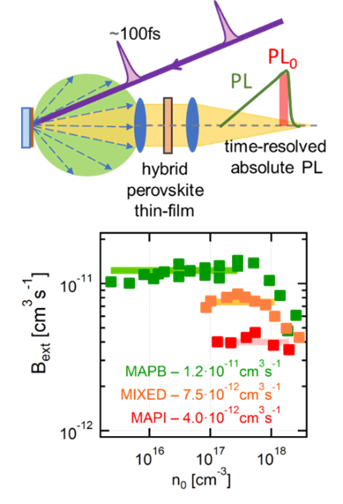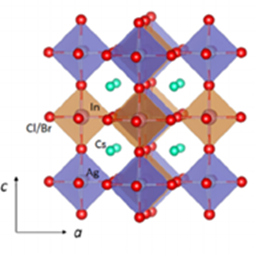|
Dipartimento di Fisica |
||
|
|
Double perovskites can generate warm white
light with very high efficiency, while being constituted by non-toxic earth-abundant
materials, and showing high stability and and reliability. Our study on these
materials, published in Journal of Mat. Chemistry C (Liu,
F. et al., 2022), show how the emission efficiency is correlated to the
presence of small amounts of Ag or Bi, depending on the compound, allowing us
to identify best compositions. The results are supported by simulations with ab initio methods ant ultrafast optical
spectroscopy measurements, that allowed us to link the performances to the
formation of self-trapped excitons (STE) in the material. |
|
|
An accurate calibration of the
experimental setup for the measurement of time-resolved photoluminescence
(TRPL) allowed us to directly assess the radiatice decay rate of
photocarriers in hybrid perovskites. The results are showing that in the
analyzed compounds this values is surprising lower with respect to what found
with different indirect techniques, based on the fit of radiative decay
profile with ABC equations. The results published in A. Simbula et al. (2022), pave the way to
new strategies for the optimization of perovskite solar cells. |
||
|
|
Ultrafast tandem spectroscopy on perovskite thin films
|
|
|
Lead-free double perovskites for
high-efficiency light sources
|
||
|
Tesi disponibili Hybrid perovskite solar cells Femtosecond spectroscopy on
thin films Nanomaterials synthesis Exploratory synthesis of
halide perovskites Characterization of materials
for LED sources |
||





